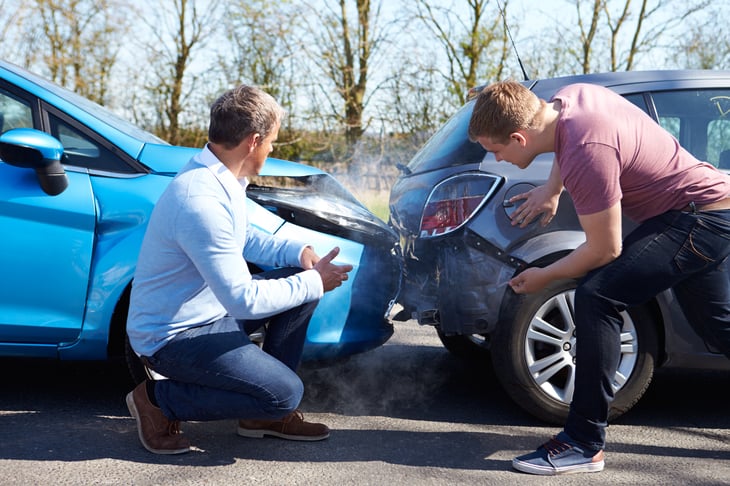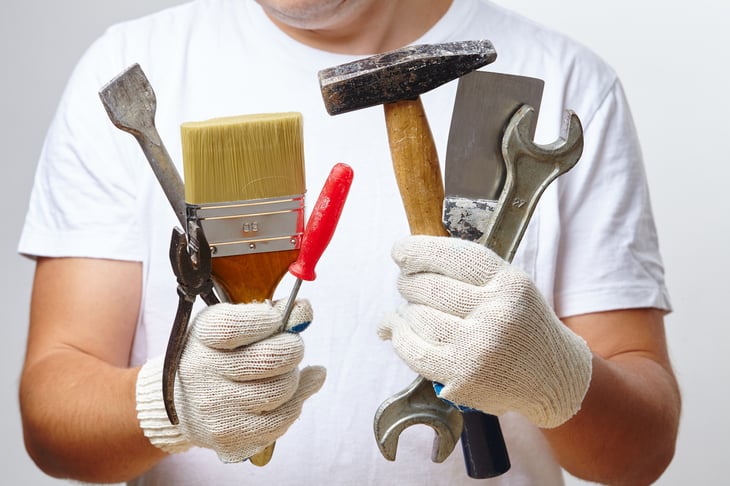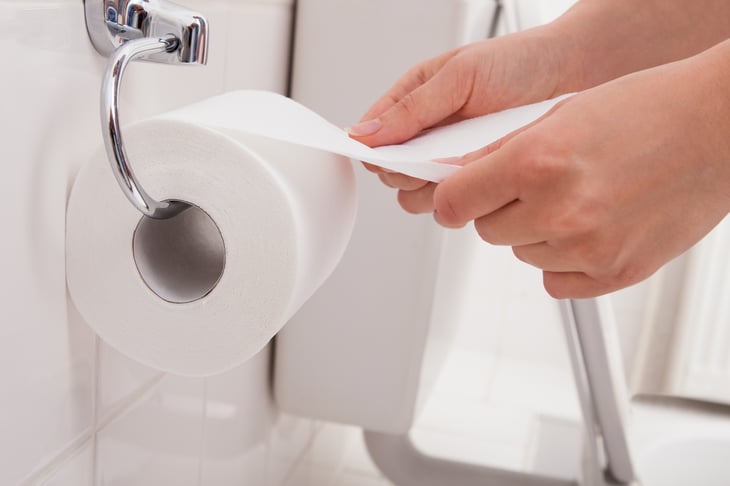
During the lean, early years of my marriage, saving pennies was a necessity. However, as my spouse and I got older and our financial situation improved, I continued to pay as little as possible for anything and everything.
I could afford more, but I just didn’t want to spend more.
Eventually, my shopping philosophy began to shift. After years of being surrounded by poorly made stuff that never worked as I had hoped, I decided that just because something is cheap, it isn’t necessarily a good value.
Some of you may be saying “duh,” but it took me a while to accept that simple truth.
Now, I value quality over price, especially for certain items. The following things often are worth the higher cost.
1. Adequate auto insurance

Having the right vehicle insurance protects you from a financial calamity resulting from an auto accident, regardless of who’s at fault. Auto insurance policies have several types of coverage, including comprehensive and collision, liability, personal injury protection and uninsured motorist coverage. Depending on your circumstances and your vehicle, you may be able to cut back on some components.
But don’t cut crucial parts, like liability coverage, to save money. Liability “is one area of your car policy where you don’t want to scrimp,” says Money Talks News founder Stacy Johnson. Another safe way to lower costs is by opting for a higher deductible.
It’s not really complicated. Stacy’s article tells you how to buy auto insurance, including what parts of coverage are safe to drop and when.
2. Good quality tools

Whether we’re talking about power tools or kitchen tools, you want the best items you can afford if you’ll be using them regularly.
Thin pots and dull knives will have you running to the takeout line rather than cooking at home. Anemic power drills and flimsy hand tools will leave you cursing and make your weekend projects all that more of a chore.
If you need an item for a one-time use, you can probably get by with a cheaper version. Renting might make even more sense in some cases.
3. A vehicle that goes beyond the basics

Remember the Yugo, a subcompact made in the then-nation of Yugoslavia? It was sold in the U.S. in the 1980s at bargain prices, but there was a reason it was so cheap. Low-end cars come with low-end parts. They are uncomfortable to drive and may end up needing multiple repairs before dying prematurely. In the Yugo’s case, the vehicle was so bad that Car and Driver calls it the “worst car in history.”
Rather than buying the cheapest vehicle possible, look for one with a reputation for reliability and safety. It will likely last you longer and need fewer repairs.
You’ll spend more on a better car, but it doesn’t have to put you in the poorhouse. Because good cars tend to hold up for many miles — with a fair number of top models likely to last for at least 250,000 miles — go ahead and find a quality brand but buy used for a lower price. If you are worried because the manufacturer’s warranty has expired, you can buy your own warranty through a company like Endurance.
Bottom line: Think “affordable,” not “bargain basement.”
4. Services from competent professionals

It would really stink to pay someone to do your taxes and then find out he or she filed the paperwork all wrong. And yet, that’s the sort of thing that happens when you go the cheap route for professional services.
From financial advisors to auto mechanics, you want to spend extra to get someone who knows what they’re doing. It could cost more upfront but will save money in the long run. You’ll also save yourself the aggravation and stress from scrambling to clean up the mess created by a cut-rate professional.
5. The best house you can afford

Like cheap cars, some inexpensive houses may cut corners on quality. You get new construction but with paper-thin walls and chintzy cabinets. They may be expensive to heat and uncomfortable to live in.
You could buy an older house — one with fantastic bones — in hopes of saving money. However, the low price could be because it’s in a neighborhood plagued by crime, traffic or some other undesirable element. Going cheap in this case could make for a bad living environment. Plus, your house will be a lousy investment if no one wants to buy it from you because of the neighborhood.
Instead of seeking out the cheapest house possible, buy the best house you can afford — considering both the structure and the location.
6. A lifetime of memories

Don’t overlook the importance of sometimes splurging on memorable experiences.
After my husband’s death at age 37, I began questioning the wisdom of waiting to enjoy life. It seems like we often want to put off the good life until we have a little more money … or until the kids get older … or until the stars align and angels sing.
I’m not recommending that people who are deeply in debt jet off on a world tour or spend two weeks in Hawaii. There are lots of ways to keep your expenditures in check while on a family adventure. And if your budget will allow a weekend at the beach or even just a day at the zoo, it can be money well-spent.
7. Clothes that last

Clothing is what first made me rethink my “cheaper is better” philosophy of spending. My closet was filled with hand-me-downs. The price was unbeatable, but nothing fit right, and I often felt frumpy and self-conscious.
The same happened with my kids’ clothes. We would load up at the bag sale at the thrift store, but many of those bargain items wouldn’t last the season.
While I haven’t sworn off thrift store shopping, I’m much more particular about the brands I buy.
As with the other items on this list, paying more doesn’t necessarily mean buying the most expensive item available. You’ll need to find the sweet spot at the intersection of price and quality.
For example, I’ve discovered a $50 pair of jeans is infinitely better than a $20 pair of jeans. However, the difference between the $50 pair and one costing $75 isn’t that great.
8. A mattress for a good night’s sleep

Life is so much better when you’re well-rested, and it’s hard to sleep when your mattress is thin or lumpy or uncomfortably stiff.
Find the best mattress to support your back and sleeping style and buy it, even if it costs a little more. Again, I’m not saying you have to buy the most expensive one. I’m only saying you should be willing to pay more to get what you need rather than settling for less.
9. Well-made shoes

Foot problems make life miserable. Wearing the wrong shoes on a regular basis — especially those with too-high heels and pointed toes — can permanently damage your feet, says Harvard Health Publishing. Bunions, corns, hammertoes, ingrown toenails and other problems can be traced to bad shoes, it explains.
There’s no reason to break the bank when buying shoes, unless you’ve already got foot pain or other special requirements. But super cheap shoes aren’t likely to provide the supportive and sturdy construction that keeps feet pain-free and holds up to wear.
10. Fresh sunscreen

Sunscreen is good for three years. You can check sunscreen containers for an expiration date or keep track on your own.
The Food and Drug Administration’s rules require sunscreens to keep their original strength that long, says the Mayo Clinic.
Using sunscreen products more than three years old can mean the effectiveness is compromised. In which case, why bother using sunscreen at all? Another caution to keep in mind is to keep plastic bottles out of the sun. Adds Mayo:
“Place sunscreen containers in the shade or wrap them in a towel. Discard sunscreen that has any obvious changes in color or consistency.”
11. Tough-enough bathroom tissue

The cheapest toilet paper is no bargain, Consumer Reports found. Low-end products are neither soft nor strong, the experts say.
As with other purchase decisions, though, you don’t have to pay top dollar to get a good product. Make your decision by comparing price per square foot and getting a midgrade paper. Bear in mind that you’ll probably need fewer sheets if you buy a stronger multiple-ply product.
Coupons and sales help keep costs down. To tell if a big, multi-roll package is worth it, just whip out your phone’s calculator and compare the price-per-roll for big bundles versus regular-sized packages.
12. Baby and toddler car seats

Not all baby and toddler car seats are created equal. Focus on safety over attractive design. The Bump, a pregnancy and parenting website, says to look for:
- Head support
- Straps that fit snugly and comfortably and adjust easily
- Impact-absorbing foam
- Side protection
- An expiration date — don’t use a car seat without a label listing the manufacture date, model number and instructions.
Protection from a side impact is particularly important. You’ll want to see deep side walls and an adequate barrier around the head, neck and spine areas. Go the extra step and check the manufacturer’s website to see if they offer research or other substantiation for claims regarding side-impact protection, advises The Bump.
Don’t be tempted to use a hand-me-down, according to Parents.com. Buying new is “the most important thing you can do,” the website says in an article about infant car seats.
13. Professional movers

Whether you are moving across town or across the country, putting all of your belongings in the hands of strangers is not for the faint of heart. Will your stuff show up at the new place in good shape? Will it show up at all?
Find a highly recommended professional moving company by reading reviews and checking with your local Better Business Bureau. There’s no need to pay top dollar but avoid the guys with the rundown truck who assure you they never use a contract.
14. House paint

If you’re painting the garage or slapping a coat of color on basement walls, go ahead and buy a lower-quality paint, says NerdWallet. But for the exterior of your home and your interior living spaces, don’t skimp on quality.
Buy at least midgrade paint, for which you can expect to pay $15 to $60 per gallon. Sticking with the existing color may let you get away with a single coat, saving money.
To get your money’s worth with paint, spend time and elbow grease on preparing surfaces.






Add a Comment
Our Policy: We welcome relevant and respectful comments in order to foster healthy and informative discussions. All other comments may be removed. Comments with links are automatically held for moderation.